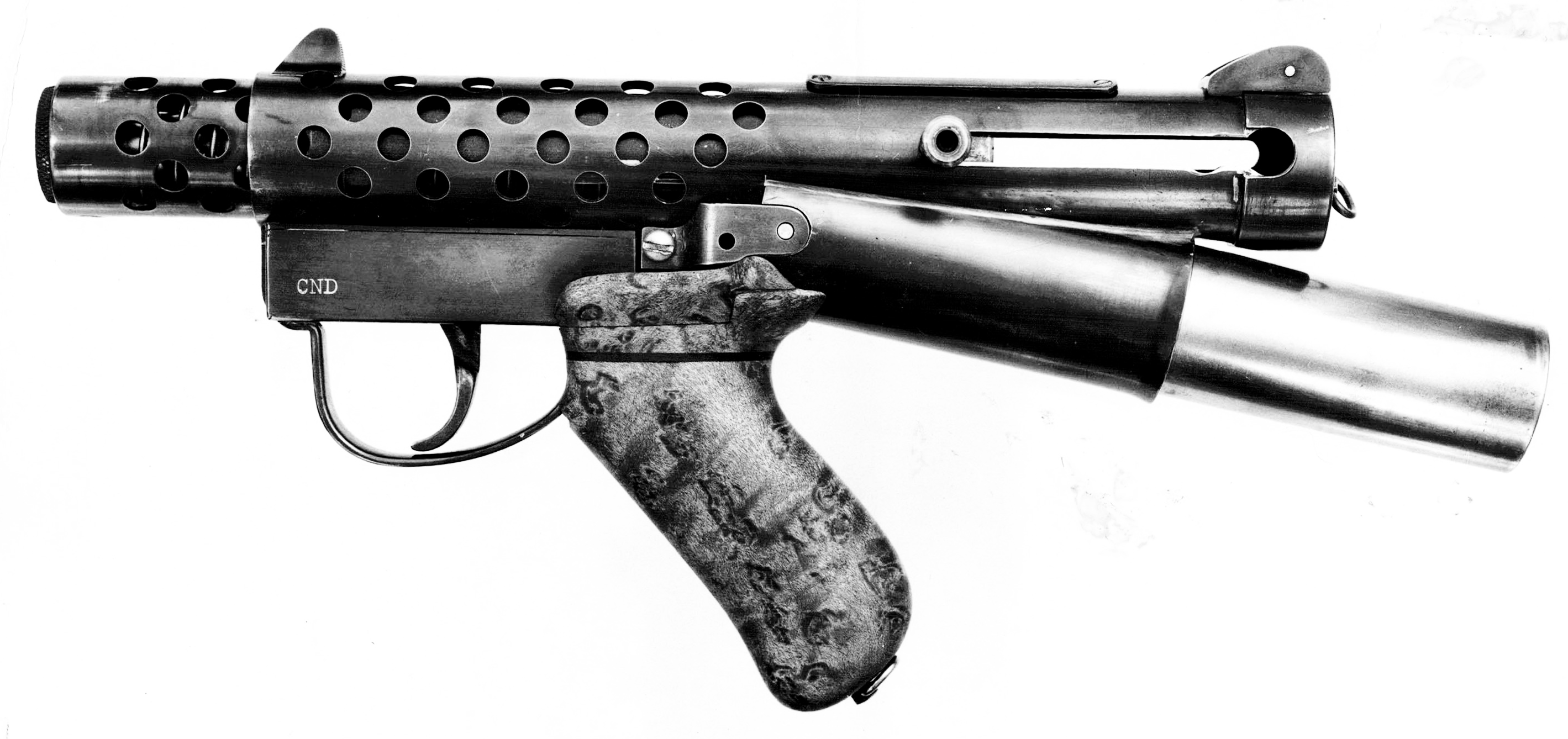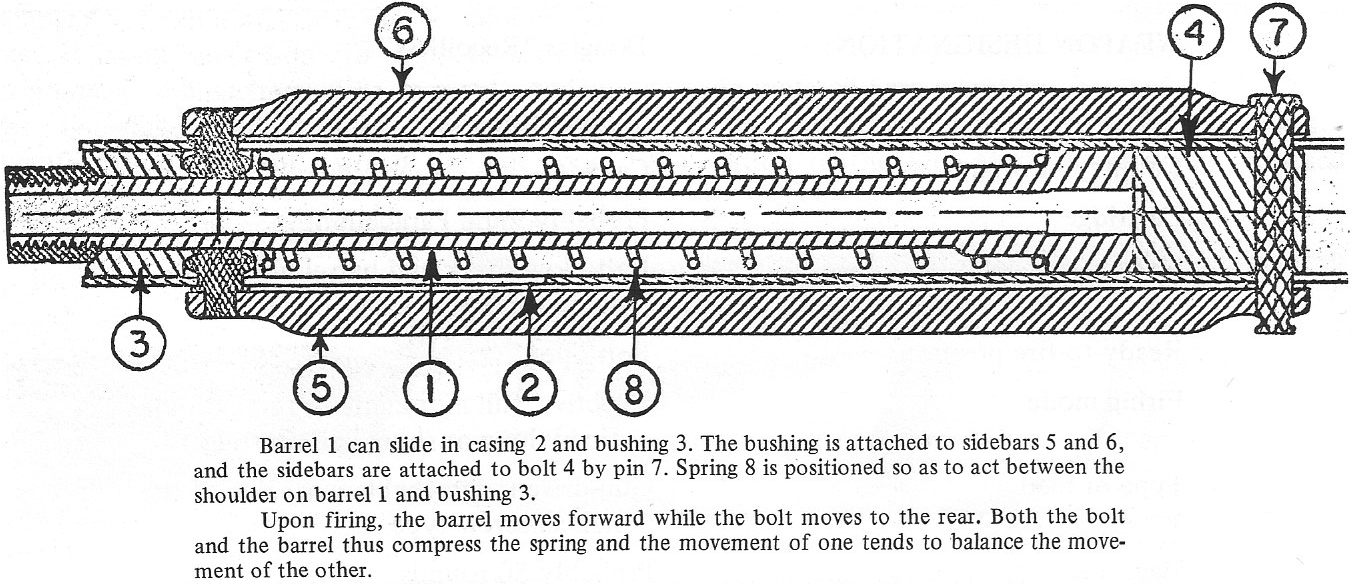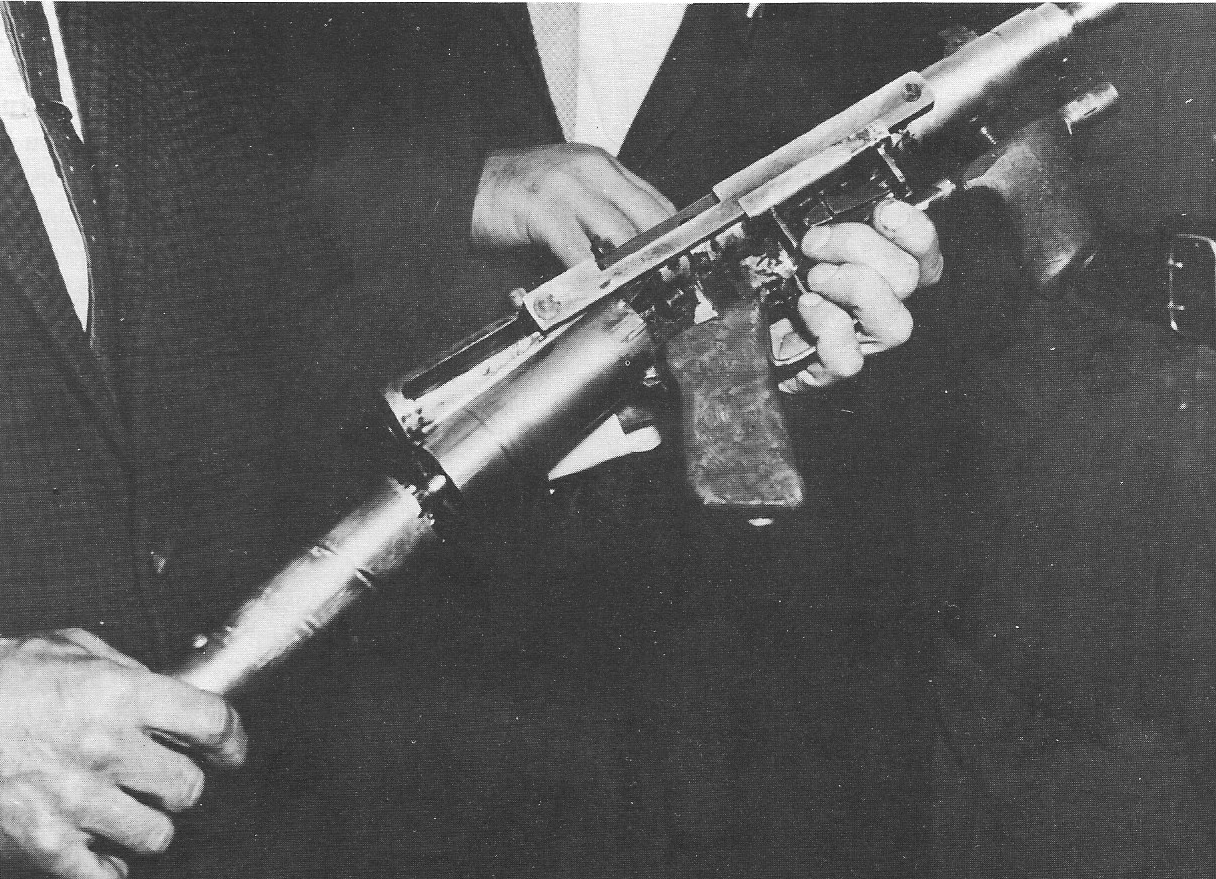Douglas "recoilless" submachine
gun

In
1969, a Canadian designer, Clifford
N. Douglas, developed a highly unusual submachine gun which was billed
as a "recoilless" SMG. This gun was unique in several ways, and acted as
a testbed for some interesting concepts that were never fully fleshed
out. The method of eliminating the felt recoil of the gun was achieved
by having the bolt and barrel fixed together by a spring. When the gun
was fired, the bolt would blow backward as expected, and the barrel
would blow forward; the central spring connecting the two would then
pull them back together, meanwhile the gap that had temporarily been
opened would allow a new cartridge to be loaded into the breech from the
magazine. Through this system, the impact of the bolt was barely felt by
the user due to the force of the barrel acting against it. What the
Douglas did not, and could not, eliminate was the force exerted by the
energy of the bullet as it left the barrel, and thus there was still
some "muzzle climb" with the Douglas SMG. Therefore what the gun was
really designed to achieve was optimal comfort for the firer, rather
than eliminating all recoil outright. Indeed, the Douglas could be fired
with one hand with significantly greater ease than a standard blowback
SMG or machine pistol.

The operating principle of the Douglas
submachine gun.
The other significant feature of the Douglas submachine gun, besides the
unique operating mechanism, was the magazine. The Douglas employed a
"bullpup" layout in which the magazine was fed in from behind the
trigger. The magazine designed for the gun was a tubular helical type,
of a similar fashion to the much later Russian PP-19 Bizon SMG. However
the magazine was not operated by a spring and follower, but was driven
by the movement of the bolt (this can be contrasted to another Canadian
experimental SMG, the SAL Model 2). The cartridges in the magazine sat
in a spiraling fluted cylinder which was rotated by a sort of screw-type
shaft protruding from the front end of the magazine. When the bolt came
back it would engage with a series of "teeth" on the shaft and force a ?
rotation of the cylinder. This would push a the current cartridge out of
the magazine opening and a new cartridge would be elevated to the top of
the magazine. When not loaded into the gun, the magazine shaft could be
locked in place by a latch to prevent it from rotating unintentionally.
The Douglas submachine gun was evaluated by the Canadian Army in the
late 1960s or early 1970s, but it never advanced past an embryonic
prototype stage. One imagines that the system used by this gun, while
technically innovative, was probably not particularly reliable compared
to a standard blowback operation.
Gallery
(click to enlarge)






